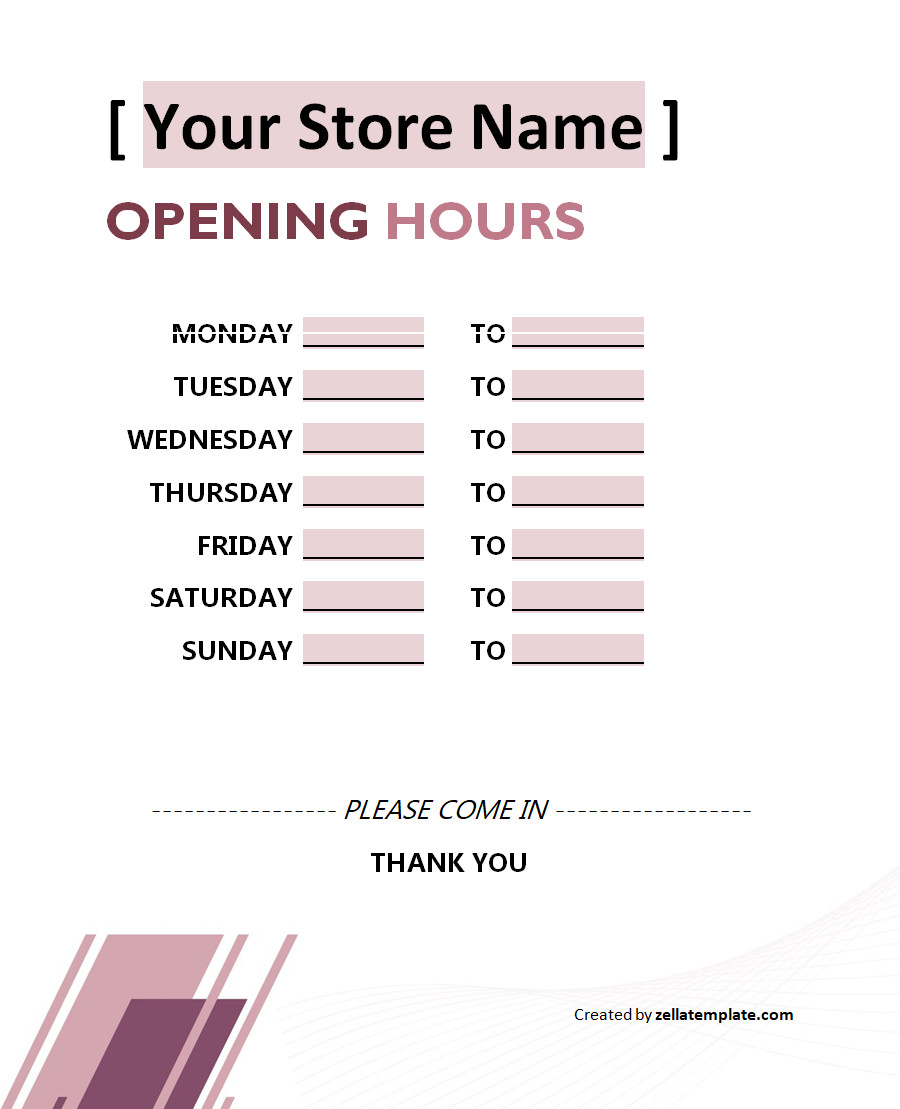What are Business Hours?
Business hours are the designated times when a business is open to the public for service and assistance. These hours are crucial for customers to know when they can visit or contact a business.
Table of Contents
They are typically displayed on storefronts, websites, or promotional materials.
Why Setting Business Hours is Important for Your Small Business?
Establishing clear business hours/opening hours is crucial for the success of small businesses. Here are detailed reasons:
1. Customer Expectations and Satisfaction
Customers rely on hours of business to plan their interactions with a company.
Meeting customer expectations for service availability enhances satisfaction and fosters positive relationships with the business.
2. Staff Scheduling and Resource Allocation
Setting opening hours enables small businesses to schedule staff effectively, ensuring adequate coverage during busy periods and optimizing resource allocation.
This strategic planning can help maximize productivity and minimize costs.
3. Consistency and Professionalism
Consistent opening hours demonstrate professionalism and reliability.
When a business adheres to set operating hours, it builds trust with customers and establishes a reputation for dependability.
4. Work-Life Balance
Establishing specific opening hours helps maintain a healthy work-life balance for business owners and employees.
Clearly defined work hours enable individuals to allocate time for personal activities, thereby reducing stress and promoting overall well-being.
5. Accessibility and Convenience
Accessible opening hours make it easier for customers to engage with a small business.
By providing clear information on when the business is open, customers can plan their visits or inquiries, enhancing convenience and satisfaction.
6. Competitive Advantage
Offering extended or unique opening hours can give small businesses a competitive edge.
By accommodating customers outside traditional operating hours, businesses can attract new clientele and retain existing customers.
7. Operational Efficiency and Cost Management
Optimizing opening hours based on customer demand can improve operational efficiency.
By aligning staffing levels and resources with peak opening hours, small businesses can enhance productivity and reduce unnecessary expenses.
8. Building Brand Loyalty
Consistent opening hours contribute to building brand loyalty.
When customers know when to expect service from a business, they are more likely to return for future transactions, fostering long-term relationships and repeat business.
Strategies for Optimizing Hours of Business
Optimizing business hours/opening hours involves strategic planning and understanding customer behavior. Here are detailed strategies for small businesses to optimize their operating hours:
1. Conduct Customer Surveys
Engage with customers through surveys to gather insights on their preferred service hours.
Understanding customer preferences can help tailor opening hours to meet their needs.
2. Analyze Customer Traffic Patterns
Track customer traffic data to identify peak hours of activity.
By analyzing when customers are most likely to visit or contact the business, small businesses can adjust their operating hours to maximize engagement.
3. Offer Flexible Hours
Consider offering flexible hours to accommodate diverse customer schedules.
By extending operating hours or providing weekend services, businesses can cater to a broader audience and capture additional sales opportunities.
4. Implement Technology Solutions
Utilize technology such as online booking systems or automated customer service channels to assist outside regular opening hours.
Leveraging technology can enhance customer experience and accessibility.
5. Monitor Competitor Hours
Stay informed about competitors’ operating hours to identify gaps or opportunities for differentiation.
By understanding industry norms and consumer expectations, small businesses can adjust their hours strategically.
6. Evaluate Seasonal Changes
Assess seasonal fluctuations in customer demand to adapt opening hours accordingly.
By recognizing trends in customer behavior throughout the year, small businesses can optimize their operating hours for maximum efficiency.
7. Promote Special Events and Extended Hours
Use special events or promotions to extend opening hours and attract customers during non-traditional times.
By creating buzz around extended hours, businesses can generate excitement and increase foot traffic.
8. Seek Employee Feedback
Engage employees in discussions about opening hours to gather insights on scheduling preferences and operational challenges.
By involving staff in decision-making, businesses can optimize staffing levels and improve employee morale.
Example Opening Hours
While opening hours may vary by industry and location, here is an example of typical operating hours for a small retail store:
- Monday: 10:00 AM – 6:00 PM
- Tuesday: 10:00 AM – 6:00 PM
- Wednesday: 10:00 AM – 6:00 PM
- Thursday: 10:00 AM – 8:00 PM
- Friday: 10:00 AM – 8:00 PM
- Saturday: 10:00 AM – 4:00 PM
- Sunday: Closed
Template for Business Hours Sign
Designing a clear and informative business hours sign is vital for small businesses. Here’s a detailed template for creating a professional-looking sign:

By using this template, small businesses can effectively communicate their operating hours and contact information to customers, promoting transparency and accessibility.
Business Hours Template – Word